![]()
![]()
![]()
Use LEFT and RIGHT arrow keys to navigate between flashcards;
Use UP and DOWN arrow keys to flip the card;
H to show hint;
A reads text to speech;
22 Cards in this Set
- Front
- Back
|
Labels |
What the computer code is trying to predict (eg if an email is spam or not, or if a set of particles is a jet or not) |
|
|
Features |
Input variables to predict label, eg. Words in an email |
|
|
Example |
Piece of data, Labeled has a label and feature Unlabled has feature only |
|
|
Model |
Thing that does the predicting, ie maps feature, x, to a predicted label y' |
|
|
Regression model Classification model |
Regression: predicts continuous variables Classification: predicts discrete values |
|
|
Emperical risk minimization |
Training a model to reduce loss |
|
|
Gradient decent algorithm |
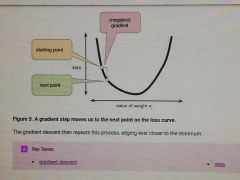
Pick a random w1 value. Calculate gradient of loss vs w graph at that point. Pick a new point that moves as a fraction of the gradient vector. |
|
|
Learning rate and optimum learning rate |
Learning rate: contant to multiply the gradient to get a new point Optimum 1D = is 1/f"(x) 2+D = inverse of Hessian (matrix of 2nd Partial Derivatives) ! For general convex functions, story is more complex |
|
|
All module imports for creating (basic) machine learning model with tensor flow |
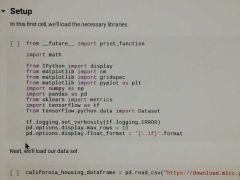
|
|
|
Stochastic gradient decent (SGD) Mini batch gradient decent (mini-batch SGD) |
SGD = Batch size of 1 mbSGD = typically 10 to 1000 examples chosen at random |
|
|
Building a model with tensorflow, all steps |
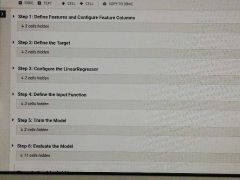
|
|
|
Step 1: define features and configure feature columns |
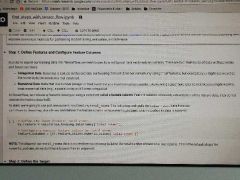
|
|
|
Step 2: define the target |
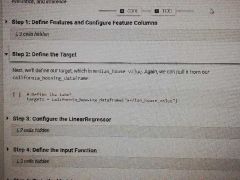
|
|
|
Step 3: configure linear regressor |
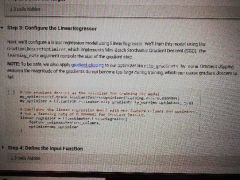
|
|
|
Step 4 |
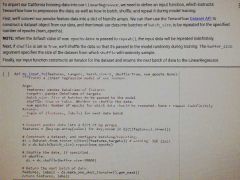
|
|
|
Input function |
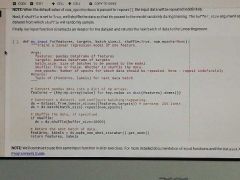
|
|
|
Step 5 (actual training function with tensor flow) |
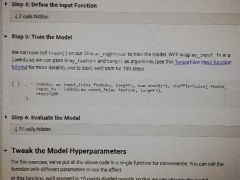
|
|
|
Step 6 evaluation and prediction |

|
|
|
One-hot encoding Multi-hot encoding |
One hot Make a feature of strings into a vector where each dimension represents a possible string (oov- out of vocabulary- is every string not accounted for, eg "hdkehijrla" for a road name) Each vector is a 1 or 0 (bool) for if the feature is equal to that. Multi-hot One-hot but many dimensions have a 1. |
|
|
Sparse representation |
Only consider and store non zero values in one-hot or multi-hot vectors (so if feature is street name and there are a million streets, the vector doesn't have to have a million dimensions) |
|
|
Z score |
Scaling using stdevs from the mean Scaledvalue = (val - mean) / stdev Usually between -3 and 3 |
|
|
Code to create buckets from lattitude using pandas |
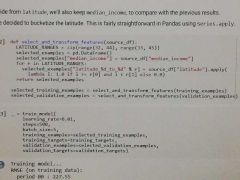
|

